Frequently Asked Questions (FAQ) About Deer Feeding
1. What is the best protein for deer in the summer?
Cowpeas are an excellent choice, providing around 8,000 lbs./acre in forage per year and containing about 30% crude protein. They are extremely digestible, highly preferred by deer, and more browse-tolerant than soybeans. This makes cowpeas ideal for supporting antler growth, milk production, and body weight.
2. What is the cheapest thing to feed deer?
Corn and grains are cost-effective options that are rich in carbohydrates, while soybeans provide a good balance of carbohydrates and fat. These are particularly beneficial for deer during the winter months when they need extra energy.
3. What month should I feed my deer protein?
- Spring: This is one of the best times to feed protein to whitetail deer.
- Summer: A protein-rich diet remains critical for the growth of fawns and bucks. Minerals like calcium are also essential during this period to support their development.
4. When should you not feed deer?
You should avoid feeding deer during the winter. In this season, their natural behavior includes reduced activity and feeding, relying on their body fat and natural vegetation. Providing supplemental food can disrupt this natural cycle and is not in their best interest.
5. What is a deer’s most favorite food?
Deer primarily eat browse (woody portions of leaves and stems), forbs (broad-leaved plants), mast (like acorns and apples), and grass. However, the quantity and type of food deer prefer can vary throughout the year and depending on the region.
6. What is the best natural protein for deer?
Productive, high-protein food plots in peas, beans, or lab-lab can provide up to 35% protein when properly fertilized. These plants are highly palatable, allowing deer to digest most of the protein and nutrients they consume.
7. When should you feed deer protein?
The best time to feed deer protein is from mid-spring to late summer. This is a crucial period for bucks growing antlers and does rearing fawns. During this time, fill your feeders with high-protein feed that also includes essential minerals.
8. Can you mix corn and protein in a deer feeder?
Yes, you can mix corn with protein. If deer in your area are not familiar with protein pellets, start by mixing a 50/50 blend of corn and protein pellets. Deer tend to eat familiar feed over something new.
9. What is the best homemade deer feed?
A simple homemade deer feed can be made by mixing equal parts corn and whole oats. You can use cracked corn, whole kernels, or ground corn, depending on your preference.
10. How many pounds of corn can a deer eat in one day?
Be cautious when feeding deer corn. While deer can eat corn, rapid consumption of 2-3 pounds by a deer not accustomed to it can cause serious digestive issues due to the high starch content.
11. Why do deer stop eating corn?
Deer may stop eating corn because they cannot digest it properly. Within six hours, corn can alter the environment in the rumen, turning it acidic and destroying the microbes needed for normal digestion. Not all deer die immediately from acidosis, but it can be harmful.
12. What is the healthiest food for deer?
Oats are a healthy choice for deer, offering a good mix of fiber and carbohydrates without disrupting their digestive system. In the spring and summer, you can also feed them produce like apples, grapes, cherries, pears, carrots, and snap peas.
13. What do deer like to sleep on?
Deer prefer to bed down in tall grass, such as CRP (Conservation Reserve Program) fields, goldenrod, and marsh or prairie grasses, where they can see just above or through the grass. Dense, low-growing pine thickets or cedar groves also make ideal bedding areas for whitetail bucks.








